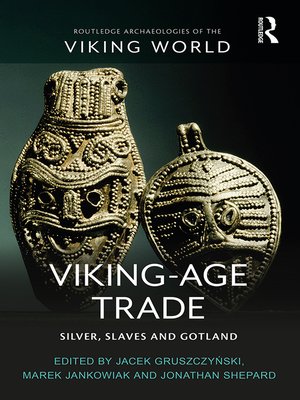Viking-Age Trade
ebook ∣ Silver, Slaves and Gotland · Routledge Archaeologies of the Viking World
By Jacek Gruszczyński

Sign up to save your library
With an OverDrive account, you can save your favorite libraries for at-a-glance information about availability. Find out more about OverDrive accounts.
Find this title in Libby, the library reading app by OverDrive.



Search for a digital library with this title
Title found at these libraries:
| Library Name | Distance |
|---|---|
| Loading... |
That there was an influx of silver dirhams from the Muslim world into eastern and northern Europe in the ninth and tenth centuries is well known, as is the fact that the largest concentration of hoards is on the Baltic island of Gotland. Recent discoveries have shown that dirhams were reaching the British Isles, too. What brought the dirhams to northern Europe in such large numbers? The fur trade has been proposed as one driver for transactions, but the slave trade offers another – complementary – explanation.
This volume does not offer a comprehensive delineation of the hoard finds, or a full answer to the question of what brought the silver north. But it highlights the trade in slaves as driving exchanges on a trans-continental scale. By their very nature, the nexuses were complex, mutable and unclear even to contemporaries, and they have eluded modern scholarship. Contributions to this volume shed light on processes and key places: the mints of Central Asia; the chronology of the inflows of dirhams to Rus and northern Europe; the reasons why silver was deposited in the ground and why so much ended up on Gotland; the functioning of networks – perhaps comparable to the twenty-first-century drug trade; slave-trading in the British Isles; and the stimulus and additional networks that the Vikings brought into play.
This combination of general surveys, presentations of fresh evidence and regional case studies sets Gotland and the early medieval slave trade in a firmer framework than has been available before.







